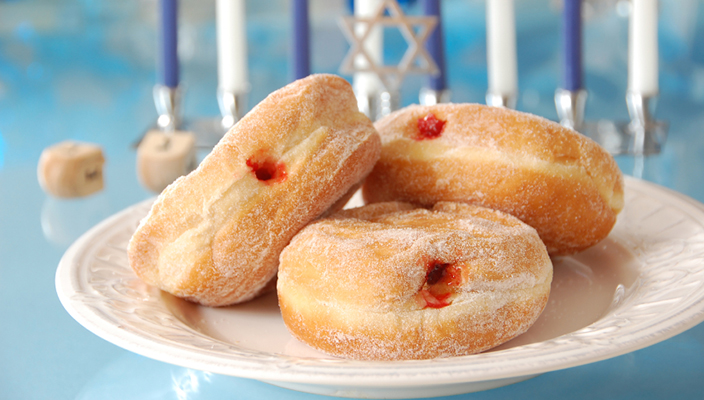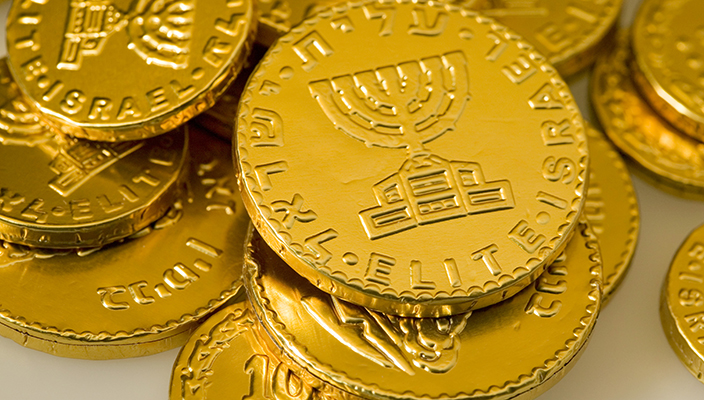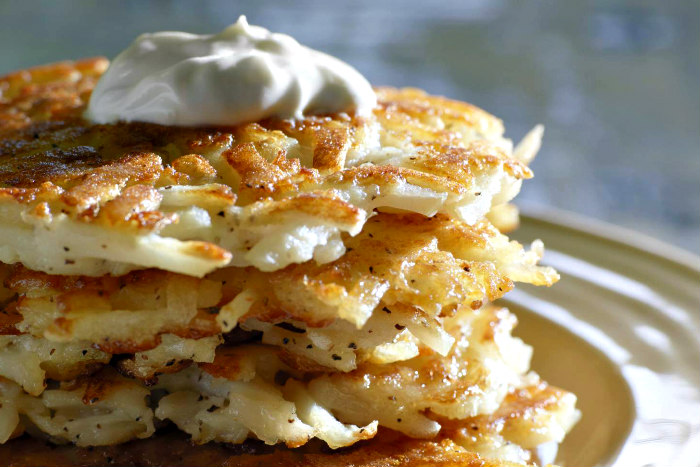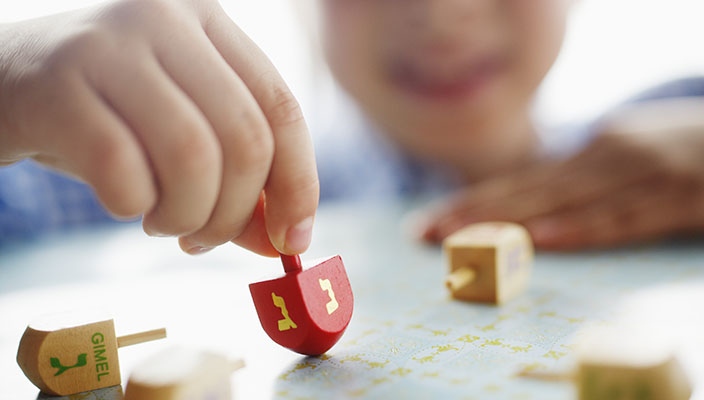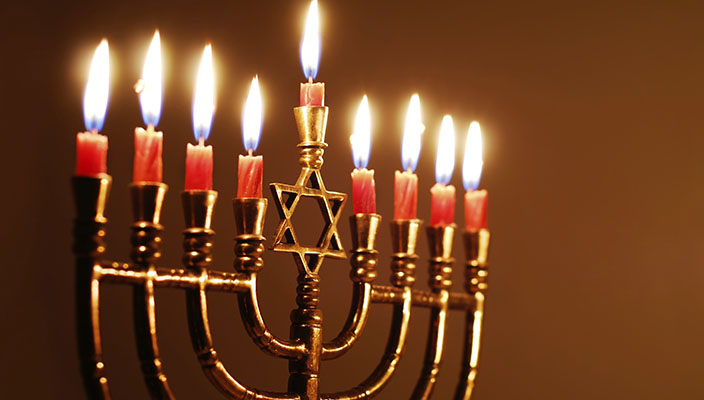What are sufganiyot?
Sufganiyot are donuts, usually jelly-filled, that commemorate the miracle associated with the oil that burned for eight days in the Hanukkah story. Foods cooked in oil are traditionally eaten during Hanukkah. Watch this Bimbam video to learn more:
